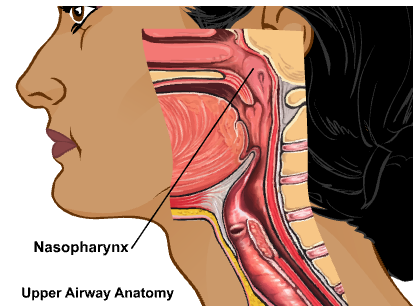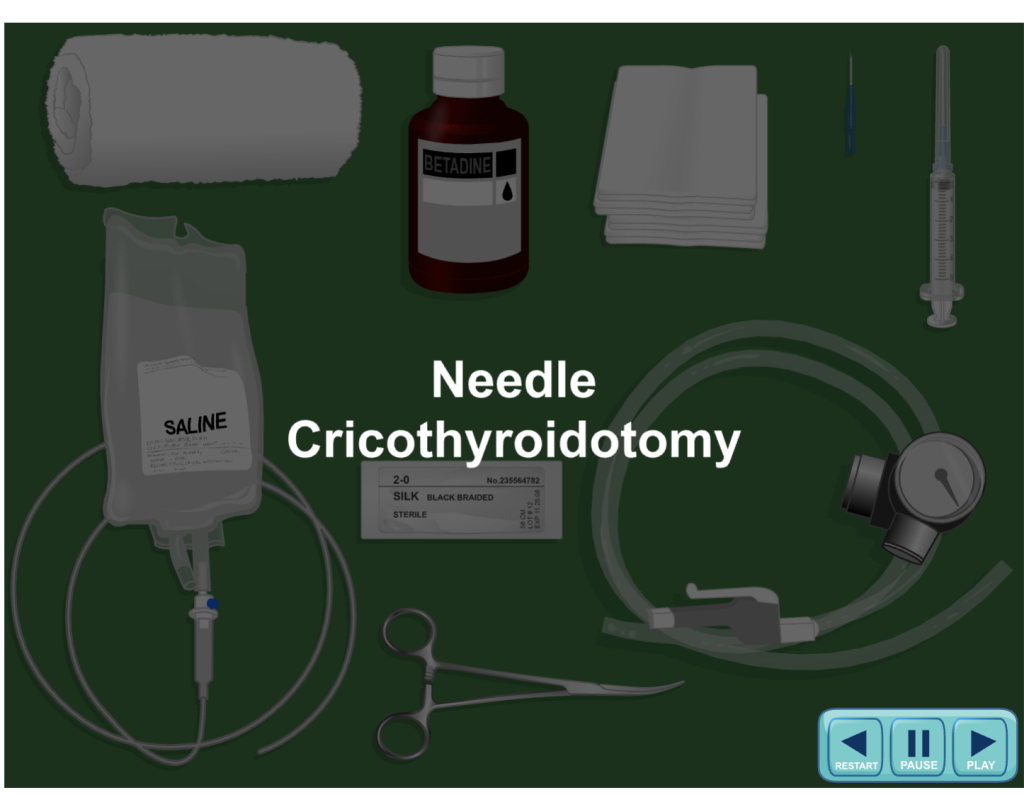Description #
This unit is intended for training of undergraduate, clerkship, and first year of the core residency program for review of airway anatomy, procedural skills and conditions causing difficulty in airway management.
Learning Objectives #
During this unit, students will:
1) Review the anatomical structure of the airway
2) Observe conditions causing difficulties in airway management:
a. Pharyngeal Obstruction
b. Tongue Edema
c. Trismus
d. Laryngospasm
3) Practice hands-on skills in Airway Management for the compromised patient.
Introduction #
The knowledge and skills necessary to increase your confidence in airway management is covered in this unit. Beginning with a brief review of airway structure and function, sections on airway devices and methods for oxygen delivery to the breathing patients as well as compromised patients will be included in this unit.
Anatomical structure of the Airway #
Successful airway management requires detailed understanding of airway structures and function.
The anatomy of the respiratory system includes the structures of the upper airways and the structures associated with the lungs (lower airways).
The upper respiratory tract or upper airway primarily refers to the parts of the respiratory system lying outside of the thorax or above the sternal angle. Another definition commonly used in medicine is the airway above the glottis or vocal cords. The glottis (vocal cords) is the defining line between the upper and lower respiratory tracts.
Upper Airway*

Lower Airway
Surgical Airway Management #
#
Description #
There are 2 components to knowing how to perform a procedure: 1) cognitive understanding of the procedure (i.e. indications, contraindications, complications, ordered steps) and 2) the psychomotor coordination and technical skill of performing the procedure itself. The module will be organized into phases, moving from purely cognitive to progressively more psychomotor skill acquisition.
Phase1: Pre-course reading materials to include indications, contraindications, complications, ordered steps of each procedure.
Phase 2: Instructor demonstrates performance of the procedure. The learner then performs the procedure on a simulation model with supervision and feedback from the instructor.
Phase 3: Human Patient Simulator and Simman simulation scenarios. The learner must now manage the resuscitation of a critically ill patient in parallel with clinical decision-making, team leadership, and appropriate timing of the procedure during real-time patient encounters.
Learning Objectives #
At the end of this unit, learners should be able to perform:
1. Needle Cricothyroidotomy
2. Open Cricothyroidotomy
Introduction #
Welcome to Surgical Airway Unit. This unit contains:
- A video lecture
- Videos and Animations
- Articles
Lecture on Surgical Airway by : #
Dr. Afshn Khazei,MD,FRCPC,ABEM,ABPM-HB,CCFP,AAFP #
Lecture on Surgical Airway by : #
#
Interactive Educational Matierials #
Cricothyroidotomy*
Needle Cricothyroidotomy*

Article 1
Comparison of 2 cricothyrotomy techniques: standard method versus rapid 4-step technique.
DOI: 10.1016/S0196-0644(98)70173-8
Article 2
Use of the Trousseau dilator in cricothyrotomy.
DOI: 10.1016/s0736-4679(99)00012-8
Article 3
Comparison of wire-guided cricothyrotomy versus standard surgical cricothyrotomy technique.
DOI: 10.1016/s0736-4679(99)00123-7
Article 4
A laboratory comparison of emergency percutaneous and surgical cricothyrotomy by prehospital personnel.
